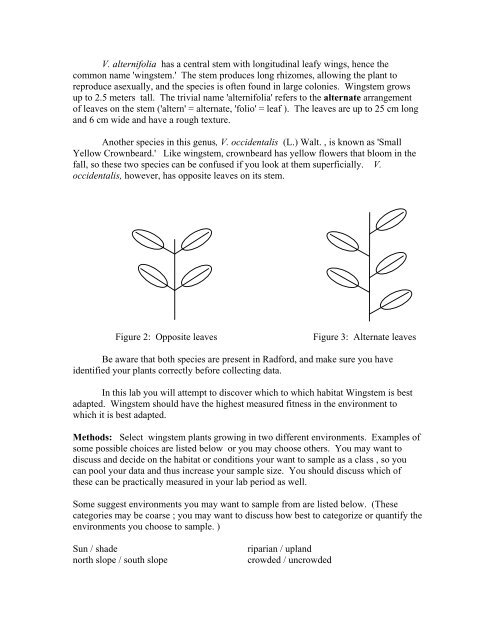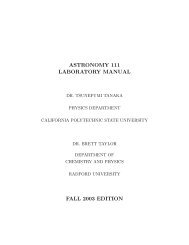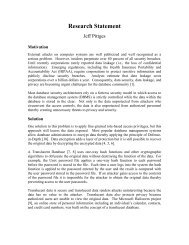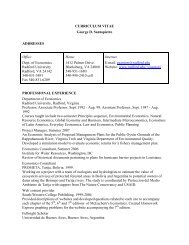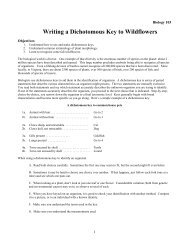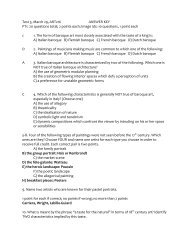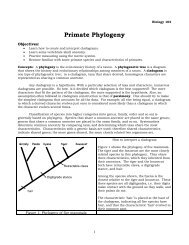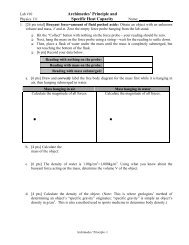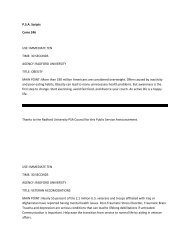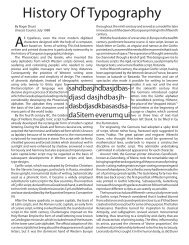Reproductive Success in Wingstem
Reproductive Success in Wingstem
Reproductive Success in Wingstem
You also want an ePaper? Increase the reach of your titles
YUMPU automatically turns print PDFs into web optimized ePapers that Google loves.
V. alternifolia has a central stem with longitud<strong>in</strong>al leafy w<strong>in</strong>gs, hence the<br />
common name 'w<strong>in</strong>gstem.' The stem produces long rhizomes, allow<strong>in</strong>g the plant to<br />
reproduce asexually, and the species is often found <strong>in</strong> large colonies. W<strong>in</strong>gstem grows<br />
up to 2.5 meters tall. The trivial name 'alternifolia' refers to the alternate arrangement<br />
of leaves on the stem ('altern' = alternate, 'folio' = leaf ). The leaves are up to 25 cm long<br />
and 6 cm wide and have a rough texture.<br />
Another species <strong>in</strong> this genus, V. occidentalis (L.) Walt. , is known as 'Small<br />
Yellow Crownbeard.' Like w<strong>in</strong>gstem, crownbeard has yellow flowers that bloom <strong>in</strong> the<br />
fall, so these two species can be confused if you look at them superficially. V.<br />
occidentalis, however, has opposite leaves on its stem.<br />
Figure 2: Opposite leaves<br />
Figure 3: Alternate leaves<br />
Be aware that both species are present <strong>in</strong> Radford, and make sure you have<br />
identified your plants correctly before collect<strong>in</strong>g data.<br />
In this lab you will attempt to discover which to which habitat W<strong>in</strong>gstem is best<br />
adapted. W<strong>in</strong>gstem should have the highest measured fitness <strong>in</strong> the environment to<br />
which it is best adapted.<br />
Methods: Select w<strong>in</strong>gstem plants grow<strong>in</strong>g <strong>in</strong> two different environments. Examples of<br />
some possible choices are listed below or you may choose others. You may want to<br />
discuss and decide on the habitat or conditions your want to sample as a class , so you<br />
can pool your data and thus <strong>in</strong>crease your sample size. You should discuss which of<br />
these can be practically measured <strong>in</strong> your lab period as well.<br />
Some suggest environments you may want to sample from are listed below. (These<br />
categories may be coarse ; you may want to discuss how best to categorize or quantify the<br />
environments you choose to sample. )<br />
Sun / shade<br />
north slope / south slope<br />
riparian / upland<br />
crowded / uncrowded


